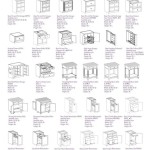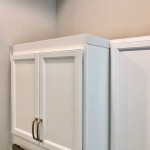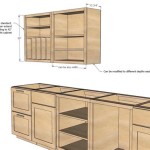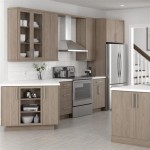Installing Kitchen Cupboard Door Hinges: Essential Aspects to Consider
Installing kitchen cupboard door hinges is a task that requires precision and attention to detail to ensure proper functionality and a seamless appearance. There are several essential aspects to consider when undertaking this task, which impact the overall quality and durability of the installation.
This comprehensive guide will delve into each of these essential aspects, providing valuable insights and practical advice. From selecting the right hinges to determining the optimal hinge placement, we will cover it all. By understanding and implementing these key considerations, you can ensure a successful and professional-looking installation.
1. Hinge Selection:
Choosing the appropriate hinges is critical. Consider the weight and thickness of the door, as well as the desired opening angle. There are various types of hinges available, such as concealed hinges, butt hinges, and T-hinges, each with its own advantages and suitability for specific scenarios.
2. Hinge Placement:
The placement of the hinges significantly influences the functionality and aesthetics of the door. Measure and mark the hinge positions carefully, ensuring they are aligned and symmetrical. Use a template or jig for precision and consistency, especially when installing multiple hinges.
3. Screw Selection:
The screws used to secure the hinges play a crucial role in durability and longevity. Choose screws of the correct size and type for both the hinge and the door material. Ensure they are long enough to penetrate the material securely without stripping or breaking.
4. Drilling Techniques:
Proper drilling techniques are essential for a precise hinge installation. Use a drill bit slightly smaller than the screw diameter to create a pilot hole. Countersink the screw holes slightly, creating a recessed area for the screw heads to sit flush with the surface.
5. Hinge Adjustment:
Most hinges allow for some degree of adjustment after installation. This enables you to fine-tune the alignment and operation of the door. Use an Allen wrench or screwdriver to adjust the tension, vertical placement, and lateral movement of the hinges as needed.
6. Cabinet Reinforcement:
For heavy doors or those with heavy contents, consider reinforcing the cabinet to ensure the hinges are securely supported. This can be achieved by adding additional screws, installing a mounting plate, or using a specialized cabinet stiffener.
Conclusion:
Installing kitchen cupboard door hinges requires meticulous attention to these essential aspects. By carefully considering each factor, you can achieve a professional and durable installation that enhances the functionality and aesthetics of your kitchen cabinetry.

Installing Concealed Cabinet Door Hinges Handles The Easy Way

Guide And Instructions For Installing Cabinet Door Hinges

How To Install Cabinet Hinges A Step By Guide

How To Measure Install Concealed Hinges On Cabinet Doors

How To Install Overlay Kitchen Cabinet Hinges Roots Wings Furniture Llc

Installing Corner Cabinet Door And Hinges

How To Install Concealed Hinges The Complete Guide

How To Install A Kitchen Cabinet Hinge Venace

Guide To Drilling Hinge Holes In Kitchen Doors Tips Tricks

How To Install Cabinet Hinges A Step By Guide
Related Posts








